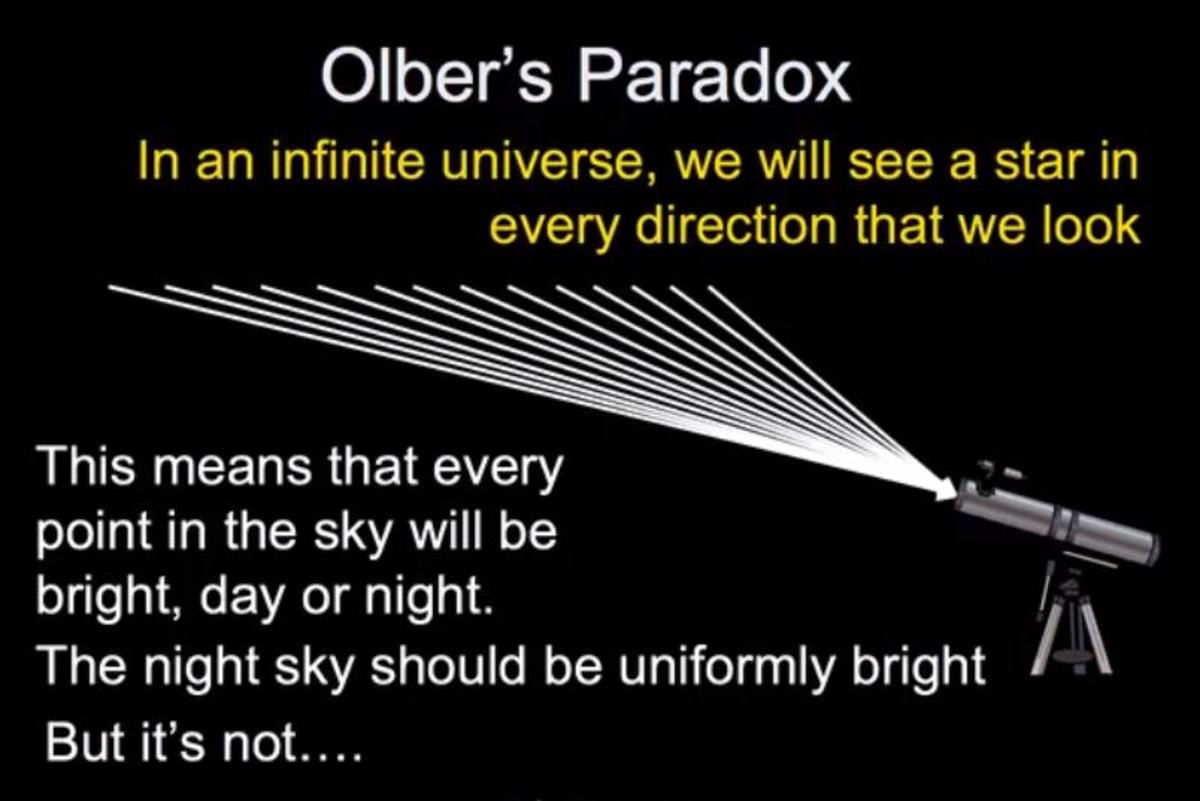

What is the The Olber's Paradox?
The Olbers' Paradox is a paradox in astrophysics that questions why the night sky is dark if the universe is infinite and filled with an infinite number of stars. This paradox was first proposed by the German astronomer Heinrich Wilhelm Olbers in the early 19th century.
The paradox can be summarized as follows: If the universe is infinite and uniformly filled with stars, then in any direction we look, our line of sight should eventually intersect with a star. Therefore, the entire night sky should be as bright as the surface of a star, making it impossible for us to have a dark night sky.
There are several explanations for this paradox, including the finite age of the universe, the expansion of the universe, and the presence of interstellar dust.
1. Finite Age of the Universe: The universe is believed to have a finite age, estimated to be around 13.8 billion years. Since light has a finite speed, it takes time for light from distant stars to reach us. Therefore, we can only observe stars within a certain distance from us, known as the observable universe. Stars beyond this distance have not had enough time for their light to reach us, resulting in a dark night sky.
2. Expansion of the Universe: The universe is expanding, which means that the distance between galaxies is increasing over time. As a result, light from distant galaxies gets stretched and redshifted, shifting it towards longer wavelengths. This phenomenon is known as cosmological redshift. The redshift causes the light from distant galaxies to become fainter and less energetic, making them difficult to observe. Hence, the night sky appears dark.
3. Interstellar Dust: Interstellar dust is present throughout the universe, and it scatters and absorbs light. This dust can block the light coming from distant stars, preventing it from reaching us. The absorption and scattering of light by interstellar dust contribute to the darkness of the night sky.
These explanations help resolve the Olbers' Paradox by introducing factors that limit the amount of starlight reaching us. The finite age of the universe, the expansion of the universe, and the presence of interstellar dust collectively contribute to the dark night sky we observe.
References:
1. Harrison, E. R. (1987). Darkness at Night: A Riddle of the Universe. Harvard University Press.
2. Loeb, A. (2001). The Long-Term Future of Extragalactic Astronomy. Physical Review D, 65(4), 047301.
3. Wright, E. L. (2001). The Cosmological Distance Ladder. arXiv preprint astro-ph/0102349.
Related Posts
© 2025 Invastor. All Rights Reserved

User Comments